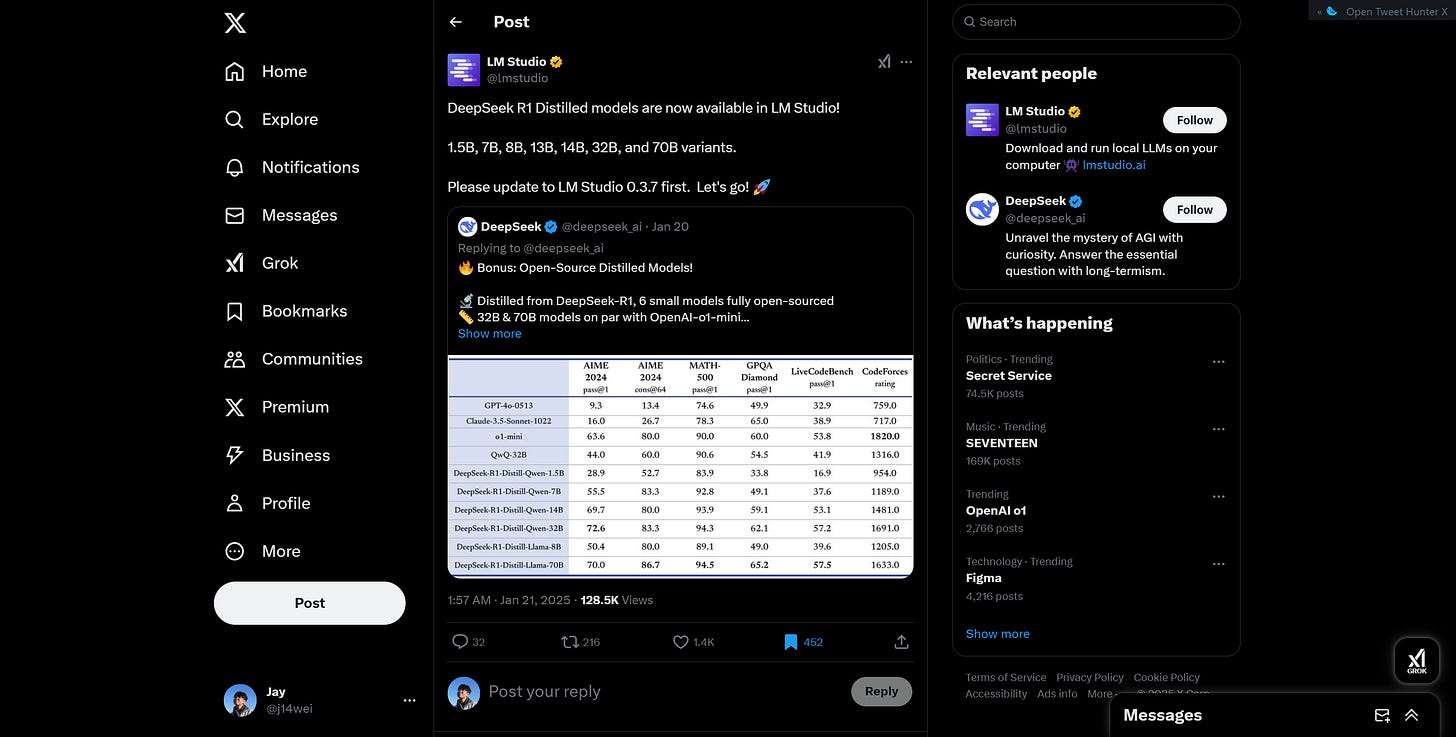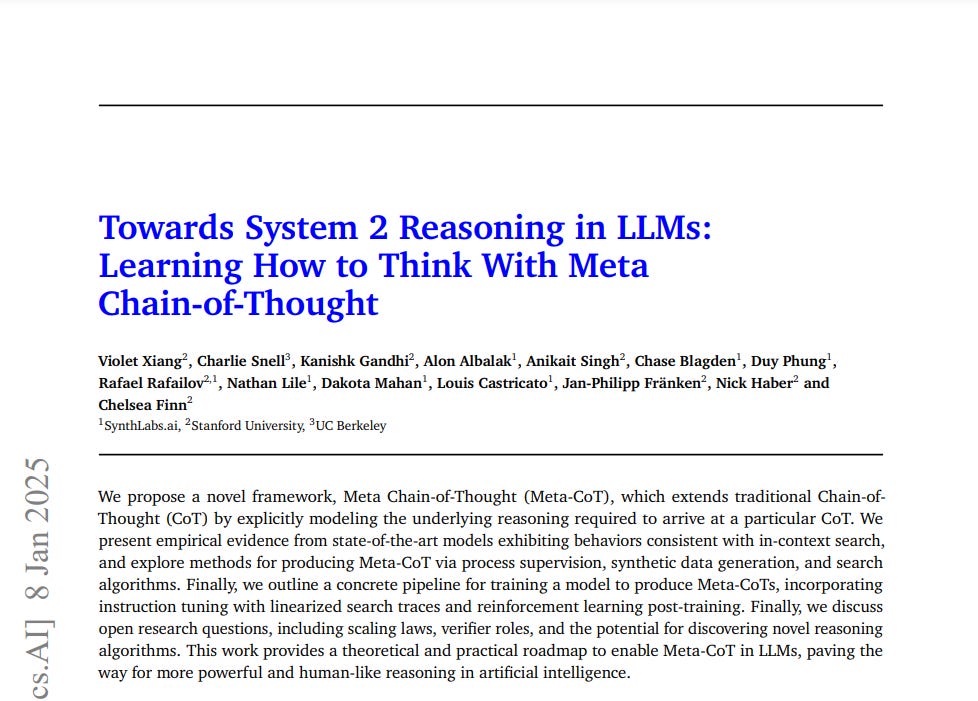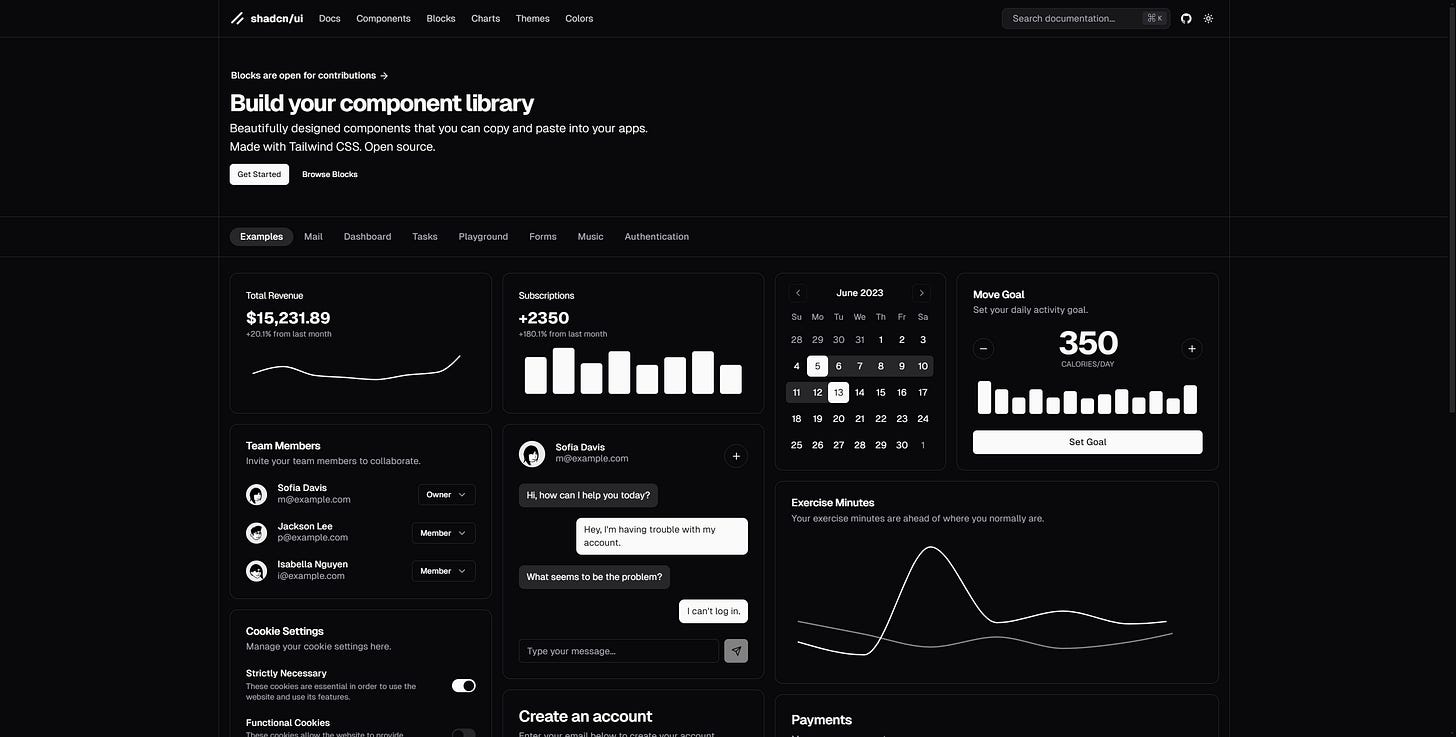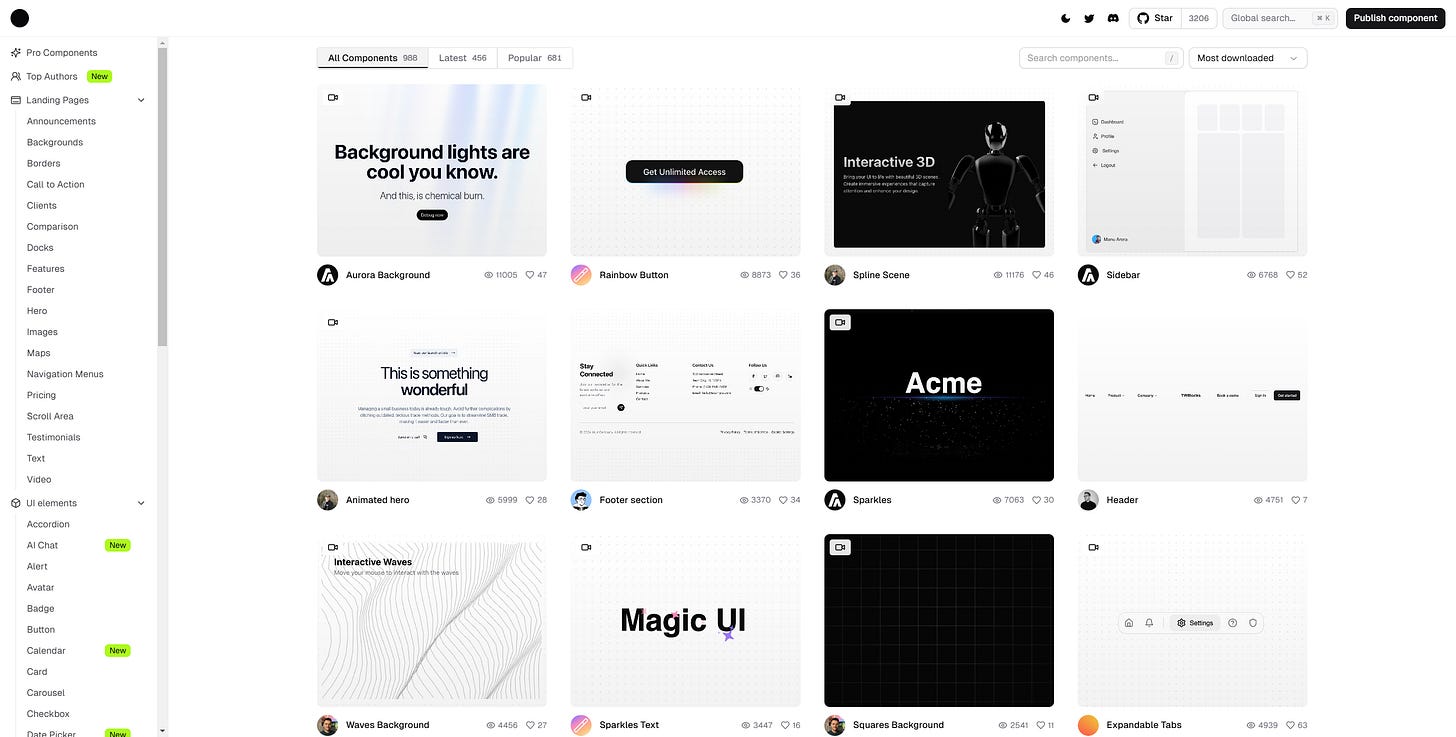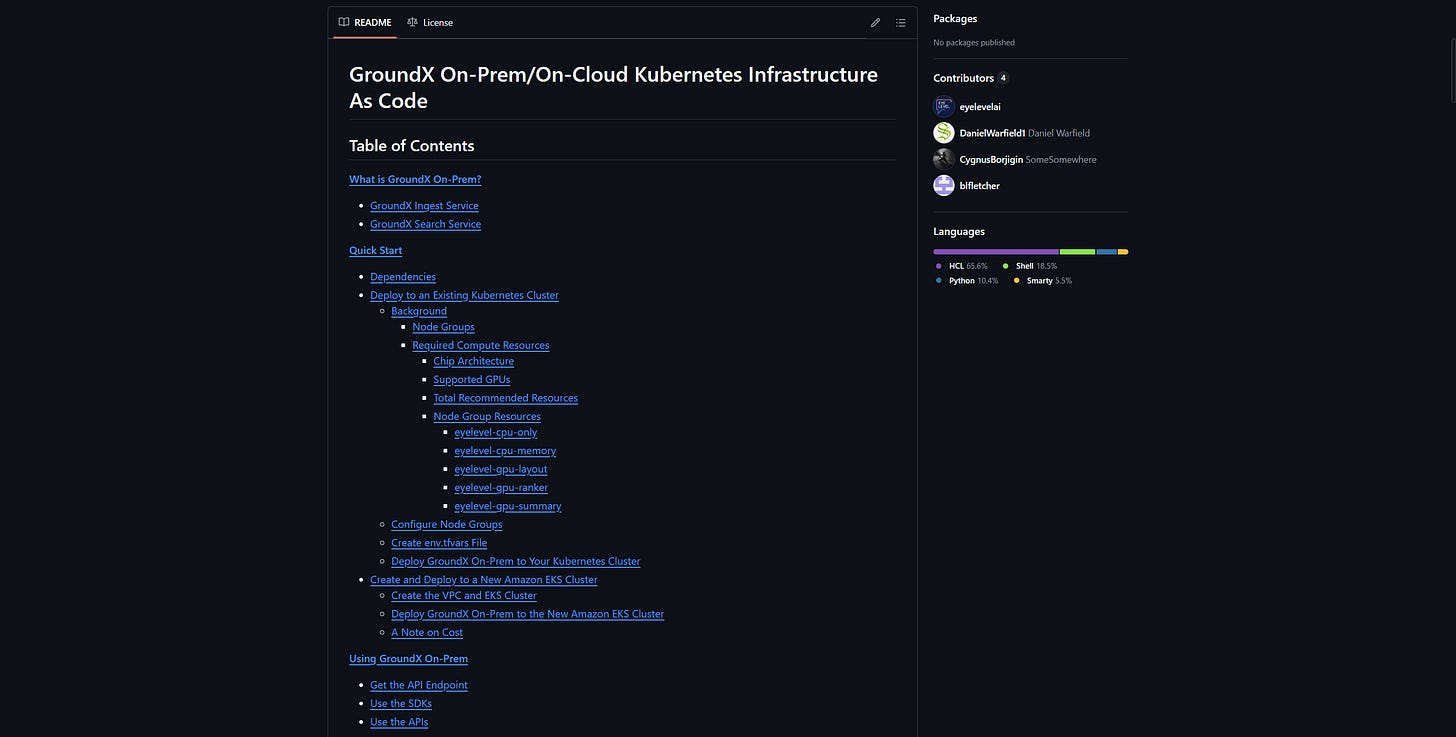You can now play DOOM in a PDF
What a world we live in.
Welcome to the very first issue of this series.
Here is your weekly roundup of the news from last week.
If you're new here, head to the first post for more background on why this newsletter is for you.
I wanted to keep this short, but there was a lot of news to cover this week.
Let's get started.
The Big Picture
We've got a couple of TikTok news here, or rather from ByteDance.
I'm sure it's not a big surprise by now that TikTok was banned in the US and got unbanned a couple of hours later.
But that’s all the headlines are covering.
TikTok makes an IDE
ByteDance has released their own IDE, called Trae with AI features integrated of course. Because an IDE is not worth releasing if AI isn't built into it.
I haven’t tested it out myself because it’s only available on macOS at this time. Most of my primary workflows is done on Windows.
Let me know if you want me to try it out and do some real world testing on it to see how well it performs.
I just like the really clean interface.
ByteDance Agent
They also released an agent model to interact with your desktop. The model and a GUI for the agent was included in 2 repositories.
I still don’t quite get what the use case of having agents that can interact with desktops are. They are slow and expensive to perform simple tasks. But nobody has yet to show a real use case of an extremely complex task being performed by an agent, at least not that I have heard of.
Instagram Layout Update
So Instagram made a really weird and seemingly random decision to change the profile grid into a 4:3 ratio.
And what’s with the new big gap on the right in the profile info area?
This design refresh is not very welcomed by most people. Because nobody thought anything was wrong with the old square ratio.
The biggest problem with this change was how it affected the existing posts. Normal posts shouldn’t be affected, but the accounts who utilise the 3 x 3 or 3 x 4 grid to create a “mosaic “ effect ruins it all.
And Instagram on the Web is still a square profile grid. The inconsistency is funny.
Instagram Launches CapCut Competitor
So while TikTok was going to get banned, there was a rumor that CapCut was going to get banned along side of it.
And riding alone this opportunity, Instagram announced its CapCut competitor called Edits. But it's not out yet, it will release on Mar 13.
Guess we will have to see if Meta's editor can stand up to CapCut, because having used CapCut myself to edit videos, it really is a big jump from what video editing was back then before TikTok.
We've got so many cool effects and transitions with just one click. Back then, it was all manual, and After Effects. Only the pros know how to do those then. Anyone can produce a sick looking video these days.
And mobile editing has become so powerful, what everyone once thought you need a giant screen to edit a video, a keyboard and a mouse to be efficient at editing. You can do all of those on mobile now with the same level of performance and efficiency. It's pretty amazing.
ChatGPT Tasks
You can now schedule what’s called “tasks” in ChatGPT, which are essentially cron jobs that run at a specified time and interval.
Interesting to see them killing more startups with their updates, but I have yet to see what is a good use case for this since it launched a week ago.
Of course, people try to come up some use cases by doing some simple tasks, but I haven’t seen anyone using it for anything really mindblowing or necessary yet.
If you’ve got one, let me know!
Under the Radar
Bun 1.2
Bun released a major update and supports S3 API natively.
Personally, I kept getting into weird compatibility issues with some packages trying to get bun to run.
And Windows support is still very wacky. My primary workflow is on Windows.
I believe it’s production ready and people are already using it in production, but looks like it’s still a while until it can get major adoption.
Oracle Free Server
CyberFlow shared a video on Oracle’s powerful and generous free tier. We’ve all hear of AWS, GCP and Azure free tier.
But this one is unlimited.
I’ve yet to try it myself because I kept running into weird issues with the site when registering for an account. Malwarebytes kept blocking the cookie consent popup, leaving the page unusable.
Let me know if you want me to do a review on this.
Samsung S25 Series
Samsung just unveiled their S25 series. But what nobody is talking about is the Edge model, teased at the event. Said to be the thinnest phone ever made, but we don’t have the official numbers.
And from the shots, it doesn’t look that thin. There was no release date announced for this model. Likely this year.
Tremor Joins Vercel
Vercel has acquired Tremor, a huge library of dashboard components like charts and made all of the paid blocks and components free and open source.
This was the go to component library for building these charts before shadcn/ui implemented support for charts using Recharts.
Nevertheless, you can use both interchangeably. A very welcoming change.
EAS Deploy
Expo announced their hosting service for React Native server API routes. They recently announced support for API routes last year.
And now you can host them directly through Expo. And the support for it seems pretty seamless and easy.
TrAIn of Thought
There's just way too many things going on in the AI space every single week. But not everything is important. There's so much hype from just all the new model launches, benchmarks, and new AI-integrated IDE forks.
At this point, we have a new big model release and a new IDE fork release every week. But we won't cover all of them.
There's a lot of development in the AI Agent space, and everyone is just building a startup on that. This space has become very oversaturated and Microsoft/Google are leading it. And yet, we are still so many years away from AGI.
And there are still a lot of AI wrappers getting built every single day.
There is nothing wrong with an AI wrapper if you are providing value. The best bet right now is integrating AI with everything else, and that's what everyone is doing — like an AI fridge, an AI mouse.
But the big problem with it all, we need to pay credits for using them or a monthly subscription. We're slowly turning everything that we own into a subscription, printer ink,
You know, it's actually amazing AI at the very foundation is just a very complex if/else and they can do such complex thinking from this alone.
The problem with AI is that we're trying to find a use case for everything. We're trying to fit AI into everything that we can think of to see if it works. The thing is, AI right now works really well as a human assisted tool to speed up the productivity of humans. It is still just not good enough to be fully autonomous to do anything on its own yet. And I want it to be good. I want it to become smart enough to be fully autonomous and build and deploy an entire system on its own. There's still a lot of human in the loop required today, and sadly it won't be taking over jobs soon, only those jobs with very manual tasks that any LLM can do.
Project Stargate
A big joint venture between OpenAI, Oracle and some of the big companies to invest $500 billion into AGI research.
We’re still far from it and hopefully with all the money pouring in, we will get closer to it soon.
With OpenAI being infamously closed source, this is likely to be a “for profit” project as well. After all, it’s a lot of money invested into this.
Cline Copilot
Cline now supports using GitHub Copilot as a model provider.
At the end of last year, I built a reverse API by proxying requests from an API endpoint to the GitHub Copilot extension.
This is essentially the same thing but directly supported through Cline. No idea how it works though. Haven’t figured out from their PRs yet, couldn’t find anything relating to the proxying of requests.
Maybe you could try.
Roo Code
Roo Cline, now known as Roo Code, a fork of Cline to add missing functionalities of the original Cline and made it better.
But the original Cline extension has caught up recently, a lot of the features Roo Code added, Cline also included it in their recent releases.
They’ve added support for acting as different roles, like QA Engineers, Product Managers, Code Reviewers. And fully customizable prompts.
DOOM in a PDF
You can now play DOOM in a PDF file. How is that even possible?
Runs on a port of DOOM and compiled using JavaScript code, injected into a PDF file somehow.
The code is fully open source. Pretty cool to check out how they managed to get it to work, and maybe we can get some more cool things to run in PDFs soon.
You can try it yourself here.
Llama in PDF
Wait. You can also run Llama in a PDF now?
This uses a JavaScript version of llama.cpp and somehow it only works in Firefox.
I couldn’t understand what’s so special about Firefox that this can work. It doesn’t work anywhere else.
But the response is pretty garbage from my testing.
They didn’t specify what model they used. Likely a very small, quantized and distilled model because the file itself is really small.
If you want to try it out yourself, download this image from the repository. The code is fully open source of course.
Maybe you can figure out the crazy wizardry behind this.
Gemin 2.0 Flash Thinking
Google has been crushing it lately with their insane model performance, and they’re back with the 2.0 release of the Flash Thinking model.
It’s free along with some of the other models, even through the API.
Even though Google was lacking behind in the race when this all started, they seem to be catching up a lot recently.
Sky-T1
You can now train your own o1 preview model, with this fully open sourced model including the datasets.
Deepseek-R1
The Chinese company that released the Sonnet 3.5 competitor, DeepSeek V3. Announced their fully opensource, MIT licensed model directly competing with OpenAI o1.
You can use and monetize it however you want because of its license.
They’ve released multiple distilled models up to 1.5B, which you can pretty much run it on a good phone.
Interesting that the open source models are not falling far behind from the frontier closed source models. We’re talking about maybe 6 months apart.
DeepSeek Engineer, another tool to build complete web apps now also supports R1.
You can easily run these models locally with LM Studio.
Realtime Agents
OpenAI released a good starting boilerplate for realtime agents, giving tools and the agentic workflow for the realtime API.
Good to check out how it works, if you want to build a project similar to this.
AI SDK
A big release from AI SDK 4.1.
Now supports image generation as well. This is becoming the go to library for building any AI integrations on the frontend.
And it’s nice to see more welcoming updates to make it even better.
WindSurf Wave 2
Codium dropped a big update on their IDE Windsurf.
The integrated AI can now search the web, and automatically generate memories.
I can’t really comment on how useful the automatic memories are until I have some real world testing.
Windsurf initially released as a free alternative with Sonnet 3.5 for all users up to a certain time frame.
Everyone hopped on it until they’ve put a price tag on it. And it’s pretty expensive. With the ambiguous credit charges, and upsold credits no longer makes it a good option for an “AI IDE”.
They recently dropped a student pricing plan as well, but for those email addresses ending in .edu. No news on the support for those who don’t have it yet.
Another new IDE?
Every week, we get a new IDE release. A new VS code fork to be correct.
Here’s another one but it’s open source.
It’s called Aide.
I haven’t tried it myself, but let me know if you want a review on this.
Cursor Rules
And if you are a Cursor fan, you will probably like this one.
This is a collection of Cursor rulesets that you can use for different frameworks and libraries. It's pretty comprehensive.
Grok
Well, Grok now has a fully standalone web app that’s not integrated into X.
If you don’t use X, you can now have a separate account just for Grok here. It uses X posts for context too.
Agent Recipes
If you’re new to agentic patterns, this is a good start to learn some of the well known patterns out there.
Included is how it works and some sample code.
Sonar by Perplexity
Personally, I have not used Perplexity that much myself. But it’s a favourite for many.
They released their Sonar Pro API with native Perplexity search capabilities.
I haven’t seen anyone testing this yet.
Liquid LFM-7B
A new 7B model release from Liquid AI.
They were known for the powerful open source model releases last year.
MiniMax-01
Another powerful open source model release here.
Stagehand
We have a new AI web browsing framework by the Browserbase team and build on top of Browserbase.
It allows you to set how much control you want to give to your agent.
Synthetic Data Generator
If you require synthetic data generation, here’s a great tool to automate it. Seems promising.
Free 4o API
Moondream promises a free 4o API through their endpoint. Hot swappable with changing the base url if you’re using OpenAI.
You can request on their Discord for an increased rate limit.
Srcbook
Another tool that lets you build entire web apps with AI.
This one makes use of what’s called “notebooks” which are essentially an app for each notebook.
It integrates an IDE into the frontend itself.
code2prompt
You can now generate a useful prompt for tools like Bolt and Lovable for useful context information of your existing repository.
Now we've got a few papers here.
Honestly, I'm not really a fan of reading papers, because the content is so cluttered and it's so technical.
I'd rather have a summary of what the paper is about and what is the novelty behind it. Anyway, here are some interesting papers this week worth keeping an eye on.
Titans: Learning to Memorize at Test Time
The Google Researchers have developed Titans, a new family of neural architectures designed to tackle the limitations of Transformers and other models in handling long-term dependencies and large context windows.
The key innovation is a neural long-term memory module that learns to memorize historical context efficiently, which allows the model to utilize past information while focusing on the current context.
Towards System 2 Reasoning in LLMs: Learning How to Think With Meta Chain-of-Thought
An extension of CoT to enhance the reasoning capabilities of LLMs by explicitly modeling the underlying reasoning processes required for complex problem-solving.
Because traditional Chain-of-Thought (CoT) methods fall short in capturing the non-linear, iterative, and latent exploration and verification processes involved in advanced reasoning tasks.
Meta-CoT extends CoT by incorporating systematic search processes, which can be internalized within a single auto-regressive model.
The proposed pipeline includes instruction tuning with linearized search traces and reinforcement learning post-training.
Transformer Squared
Sakana is a Japanese company who published the viral "AI Scientist" paper last year.
They published another mindblowing research on self adaptive LLMs that rethinks the transformers architecture all models fundamentally rely upon today.
Because we’ve realised that inference time scaling is significantly increasing the performance of LLMs, we will still eventually hit a limit.
The best bet is to develop new architectures and rethinking the existing transformers one to unlock AGI.
Predicting Your Brain
This is a really interesting paper about how AI can predict your next 5 seconds of brain activity based on just 21 seconds of MRI data.
The Grid
shadcn/ui Grid
In case you haven't heard of shadcn/ui, it is a clean library for building user interfaces in React, Next.js and some other frameworks.
The great thing about this — reverse abstraction. All the components are fully customizable, it's built on top of this component library called Radix. And changing the behaviour, styling is all up to you, because there's very little abstraction other than the Radix layer.
And they won project of the year, two years in a row.
It's such a great library for building interfaces, pretty much almost every new website out there right now is built on this foundation.
Since a while back, a grid layout was added to the documentation site.
It's pretty clean not gonna lie, in fact in an era where we are going borderless for a seamless design —
I believe Vercel actually started this bordered trend with the excessive use of borders everywhere but still achieving this super minimal look.
This has also inspired a lot of similar libraries on this reverse abstraction to form like React Aria.
Supahero
A great space for hero inspirations.
hookscn
If you need hooks, here are a list of premade ones, shadcn style. Simply install from the cli and use them.
Prism UI
If you need a landing page, here’s a full template for free from Prism UI.
React Bits
This is a very reactive and animated library of components to make your website look 10x better. I can't believe some of them are so good.
RizzUI
Another UI library is in town.
Mention Component
If you’re building a multiplayer site that requires collaboration, or a social media network. You probably need mentions, and this is a component that does just that.
shadcn Tour
Onboarding is crucial to any platform. This tour component helps you make guided website tours easily.
NextUI → HeroUI
A really nice alternative to shadcn/ui with more animated twist to it like the checkboxes.
This was one of the first component libraries built on top of shadcn/ui’s zero abstraction concept.
They’ve renamed to HeroUI.
TWBlocks
Need a landing page? Here’s some great pre-built landing page components for Tailwind.
21st Dev
This is a mega library of all the different shadcn/ui inspired components, all in one place.
It’s so nice to have everything you need here now, rather than navigating multiple sites to find the components you want.
Awesome shadcn/ui
And if that wasn’t enough, here’s literally everything else related to shadcn/ui in this directory.
Symbols
Here’s a nice library of symbols for your next project.
Whirrls
This is a nice pack of hand drawn emojis and whirrls for your landing page. It comes at $4.
Cool Shapes
Perhaps you could add some fancy twist to your landing page. Cool Shapes provides a library of free and premium looking shapes.
HandKit
If you need holographic/ghost hand gestures, look no further.
Cool Portfolio
I came across this really nice portfolio and I had to include it here.
The Spotlight
GitHub Wrapped
You can now generate your own “wrapped” for GitHub.
Here’s another one that used to a work last week, but stopped working for me. Maybe it still works for you.
Teable
If you’re thinking AirTable, think again. Here’s an open source project that is a great alternative.
DeepFace
A great new face recognition library for Python, and claims to be accurate.
What use cases can you think of other than identity verification?
Reweb
A visual builder for Tailwind code is available soon by Reweb.
Self-Hostable Enterprise RAG
Now you can host an enterprise grade RAG on your own machine.
Cloud Compare
This is such a useful tool to compare the different cloud providers; especially more people are moving towards self-hosting. And this is a good starting point to figure out which provider suits best.
I wish we had something like this back then. I had trialed and error so many different hosting providers.
The ones that work best are OVH and Hetzner. OVH support isn’t really there, you’ve got to wait a couple of days for some tickets.
Contabo is really affordable, but they have very frequent maintenance downtime. It’s good if you don’t have any mission-critical service running on it.
Upscayl
Now this isn't new, but I just didn't know they had a Windows version. Maybe they recently only added support for Windows.
I've tried the Mac version before and it's pretty good. A free image upscaler, fully local and offline, open source. Supports both Windows and Mac.
Map of GitHub
We've got a pretty interesting project here. Anavaka here created a really cool project mapping out the “universe” of GitHub.
It’s kind of like a visual representation of what kind of projects are taking up most of GitHub right now.
Seems to be frontend and AI.
That's all the news for this week. See you in the next one.
Want more? In case you missed it, catch up on the reason why I decided to start a newsletter in the first issue.
Cheers,
Jay


























